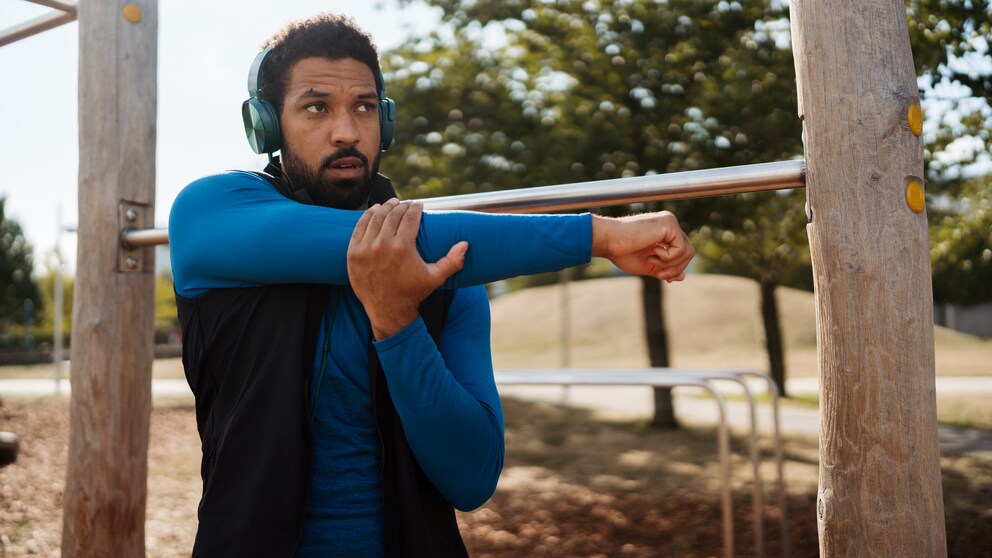Understanding the Role of Stretching in Fitness and Health
Stretching is often regarded as a universal solution for various physical issues, including muscle soreness, improved posture, and enhanced cardiovascular health. However, recent scientific research challenges this notion, revealing that stretching isn’t always the most effective method for achieving fitness goals. Experts are now emphasizing the importance of understanding when stretching is beneficial and when other training methods should be considered.
An international group of researchers has developed new guidelines to help individuals make informed decisions about their stretching routines. These recommendations aim to clarify the effectiveness of different stretching techniques and highlight areas where stretching may not deliver the expected results.
Scientific Insights on Stretching
The study, led by Konstantin Warneke from the University of Jena and Jan Wilke from the University of Frankfurt, involved 20 experts from 12 countries. They examined how stretching affects eight key areas: flexibility, strength, muscle growth, injury risk, and the cardiovascular system. The goal was to provide clear guidance for healthy adults and establish standardized terms for various stretching methods such as static, dynamic, and PNF stretching.
How Was the Study Conducted?
The research followed the Delphi method, which involves multiple rounds of anonymous surveys with voting criteria requiring at least 80% agreement. This approach ensured that the recommendations were based on systematic reviews of existing studies. Importantly, the findings are specifically tailored for healthy adults, with data on individuals with injuries or illnesses excluded.
Key Findings from the Research
Improving Flexibility
- Short-term: At least two sets of 5 to 30 seconds of stretching per muscle group, regardless of the technique (static, dynamic, proprioceptive), can increase flexibility.
- Long-term: At least five minutes of stretching per week per muscle group, divided into several sessions, leads to sustainable improvement over several weeks.
Muscle Firmness
- Acute: At least four minutes of static stretching per muscle group reduces muscle stiffness in the short term.
Cardiovascular System
- Acute: At least seven minutes of static stretching per session are needed to achieve acute effects on the cardiovascular system and blood vessels.
- Long-term: At least 15 minutes per session (at least five times a week, totaling at least 75 minutes per week) are required for long-term positive effects.
Muscle Growth and Strength
- Possible: Stretching can promote muscle growth and strength, especially in untrained individuals, with at least 30 to 60 seconds per set and at least five sets per muscle group per week.
What Stretching Can’t Do
Despite its benefits, stretching is not recommended for:
- Injury prevention
- Accelerating recovery
- Correcting postural issues
Timing of Stretching: Before or After Training?
The study also evaluated the timing of stretching relative to training sessions:
Stretching Before Training
- Static stretching immediately before strength training can slightly reduce maximum strength and power if held for more than 60 seconds per muscle group.
- Short, moderate stretching sessions (under 60 seconds per muscle group) can be performed before training. They have little negative impact and temporarily increase flexibility, particularly in sports requiring a large range of motion.
Stretching After Training
- Stretching after training is not recommended for injury prevention or faster recovery, as evidence shows no positive effect.
- However, it can help maintain or improve flexibility.
Limitations and Future Directions
The recommendations are exclusively for healthy adults. Separate studies are needed for clinical populations, such as those with orthopedic or internal diseases. Additionally, some recommendations, such as those related to cardiovascular effects or fascia adaptations, are not yet supported by many high-quality studies. The “expert status” was defined based on at least five publications in the field, but alternative criteria could lead to a different panel composition.
A central issue remains the implementation of these findings in practice. Many trainers, therapists, and athletes are unaware of current study results. The author team calls for targeted communication strategies, such as through professional associations, training courses, and digital channels.
Conclusion
Stretching works—when used purposefully. It reliably improves flexibility and can reduce muscle stiffness. However, it is hardly effective as a measure for increasing strength, building muscle, recovery, or improving posture. It is also not suitable for general injury prevention. The new recommendations offer clear, differentiated guidelines for the sensible use of stretching—and help invest training time where it demonstrably makes a difference. In summary, stretching is a tool—no more, but also no less.







